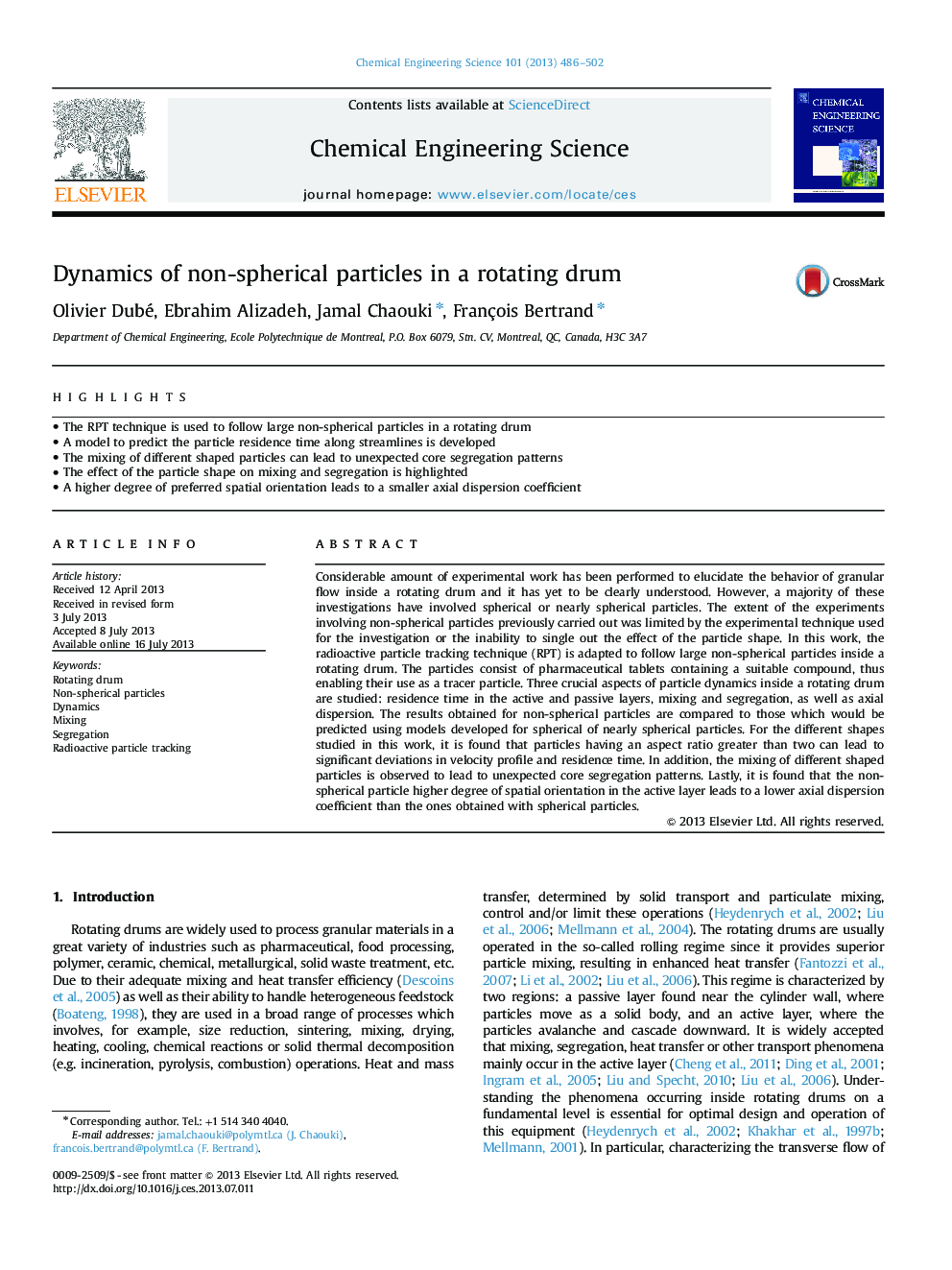| Article ID | Journal | Published Year | Pages | File Type |
|---|---|---|---|---|
| 6592024 | Chemical Engineering Science | 2013 | 17 Pages |
Abstract
Considerable amount of experimental work has been performed to elucidate the behavior of granular flow inside a rotating drum and it has yet to be clearly understood. However, a majority of these investigations have involved spherical or nearly spherical particles. The extent of the experiments involving non-spherical particles previously carried out was limited by the experimental technique used for the investigation or the inability to single out the effect of the particle shape. In this work, the radioactive particle tracking technique (RPT) is adapted to follow large non-spherical particles inside a rotating drum. The particles consist of pharmaceutical tablets containing a suitable compound, thus enabling their use as a tracer particle. Three crucial aspects of particle dynamics inside a rotating drum are studied: residence time in the active and passive layers, mixing and segregation, as well as axial dispersion. The results obtained for non-spherical particles are compared to those which would be predicted using models developed for spherical of nearly spherical particles. For the different shapes studied in this work, it is found that particles having an aspect ratio greater than two can lead to significant deviations in velocity profile and residence time. In addition, the mixing of different shaped particles is observed to lead to unexpected core segregation patterns. Lastly, it is found that the non-spherical particle higher degree of spatial orientation in the active layer leads to a lower axial dispersion coefficient than the ones obtained with spherical particles.
Related Topics
Physical Sciences and Engineering
Chemical Engineering
Chemical Engineering (General)
Authors
Olivier Dubé, Ebrahim Alizadeh, Jamal Chaouki, François Bertrand,
